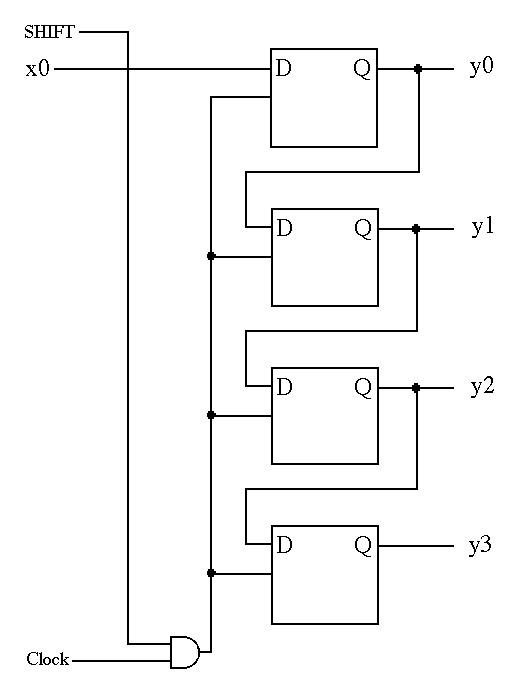This is part of the "counter and register notes" web pages, which contain the
following subtopics:
- Ripple counter
- Synchronous counter
- Synchronous counter with reset
- Very simple register (parallel load)
- Very simple shift register (serial load) <-- you are here
- Designing a circuit which can shift or load
- More realistic shift register with parallel load
Simple shift register
Here we load the register one bit at a time; the SHIFT control line moves
everything to the left by one bit, losing the former top bit, and gaining a new
low bit.

However,
we want to be able to do the straightforward "parallel load" to load
completely new
contents into a register in one cycle, rather than 32 cycles for a 32-bit
register.
But the SHIFT facility is also useful.
For example, it constitutes multiplying by two.
So we often design a circuit which can shift
or load, next.
This is part of the "counter and register notes" web pages, which contain the
following subtopics:
- Ripple counter
- Synchronous counter
- Synchronous counter with reset
- Very simple register (parallel load)
- Very simple shift register (serial load) <-- you are here
- Designing a circuit which can shift or load
- More realistic shift register with parallel load
[list of course notes topics available]
[main course page]

